Iguazu Falls is the largest waterfall network in the world. They straddle the border between Brazil and Argentina, making for an exciting opportunity to visit two countries.
Use this guide to learn the simplest and quickest way to get to both sides of the falls.
How to Cross the Border Between Puerto Iguazú and Foz do Iguaçu
Crossing between the two countries is not too difficult, however there are a few things to know in advance. These tips will help your South America travel plans go more smoothly.
- A river marks the border between Brazil and Argentina here. You must take a bridge to cross. On each side you have Brazilian and Argentine immigration checks.
- There is not a footpath or sidewalk to cross by foot over the bridge. You must take transportation such as a taxi, rental car, or bus.
- It is possible to visit the Brazilian side as just a day trip as the Brazilian side of the park can be done in less than four hours.
- You must bring your passport. Sidenote if you’re a passport stamp junkie: As of 2023, Brazil stamps your passport. Argentina does not.
- Local currencies (Argentine Pesos and Brazilian Reales) can be acquired on both sides of the border in town or at some hotels.
The easiest way to cross between the two countries is to use a local taxi driver. Your hotel can help arrange this, or you can hail a taxi on the street. This gives you personalized flexibility on when to go and where to be dropped off. The prices are reasonable and you can sometimes learn a bit more about the area from the local drivers.
There is also a bus route in Puerto Iguazú that stops at the Brazilian immigration point. This is the cheapest way to cross, but requires you to work around the bus schedule and deal with crowds. Alternatively, you could book a multi-day guided tour that takes you to both the Argentine waterfall side and Brazilian side through Get Your Guide. This is the most expensive way to visit both sides. Using a taxi is the moderate compromise between the two other options in my opinion.
Related: My Essential Travel Apps
How much does it cost to visit both sides of Iguazu Falls?
In July 2023, I paid 10,000 pesos for my taxi to take me from Puerto Iguazú to my hotel (the Double Tree Foz do Iguacu) outside the park on the Brazilian side. At the time, this was equivalent to $21 USD. Once I arrived to the Brazilian side, I had to get out of the car and enter a building for immigration. There was no line and it was very quick. Leaving Argentina took a bit longer. Immigration and customs on Argentina’s side as you leave has cars pull up to windows to present their documents.
Important note: I traveled here during the low season however and my taxi driver explained that during the high season the wait can be much longer. If you are traveling during the southern hemisphere’s summer period and especially if you plan to fly out of Foz do Iguaçu, budget for 1-2 additional hours to get through immigration and traffic at the bridge.
How many days to spend at Iguazu?
I recommend at least one full day on each side of the falls. While it is entirely possible to see both sides within one single day, I think this would feel rushed and stressful for most people.
How did I divide my itinerary?
When I visited, I devoted one day to arrive at Puerto Iguazú and settle in at my hotel. The next day I visited the park on Argentina’s side. After this, I used the next day to arrange a taxi to take me across the border and drop me at my hotel on the Brazilian side.
On day 3 I devoted one full day to see the Brazilian side. In reality, the Brazilian side only took a couple hours and didn’t require as much walking as the Argentine side, so I was not very tired out by the experience. Nonetheless, I did not want to worry about leaving by a certain time to catch a flight later that day. I flew out the following day instead from Foz do Iguaçu. Many people visit the Brazilian side for just 1-2 days as part of a two-week Brazilian itinerary.
For me, I was in the Iguazu area for 5 days in total to account for travel and transportation. This itinerary gave me a lot of time to relax and not rush between places. While there is not a whole lot to do in the area besides the falls, I took the time to relax in a lush, quieter landscape than what other places on my trip could provide (Rio de Janeiro and Buenos Aires). You should spend at least 2 days in the parks. The amount of days devoted to travel and transportation will depend on the flight schedules and your own preferences.
Guide to Argentina’s Side of Iguazu
Argentina’s side of the falls is a relatively large, preserved nature park known as Parque Nacional Iguazú. There are many trails and a train. There is a visitor’s center detailing the geological and historical background of the falls and has several spaces devoted to the Guaraní, the indigenous people of the land. Despite development pressure, the 667 square kilometers (291 square miles) is the natural habitat of more than 2,000 plants, 400 types of birds, and many mammals and reptiles. The forest is not part of the Amazon Rainforest.
There are also snack opportunities throughout the park and two main buffet style dining halls. The main hubs and developed walking areas also have free wifi. While the network of trails may seem intimidating, they are actually rather easy because they are well connected loops. It would be hard to get lost because there are many signs and the trails have railings. That said, it would be good to snap a picture of the park map or download one prior to entering.
The Lower Circuit
The Lower Circuit, also called the Circuito Inferior in Spanish, has the most elevation change and stairs. There are also ramps for wheelchairs, strollers, or if you prefer a steady incline over stairs. This trail is mostly shady and a bit damp. In my opinion, this trail provides better views of the falls than the Upper Circuit.
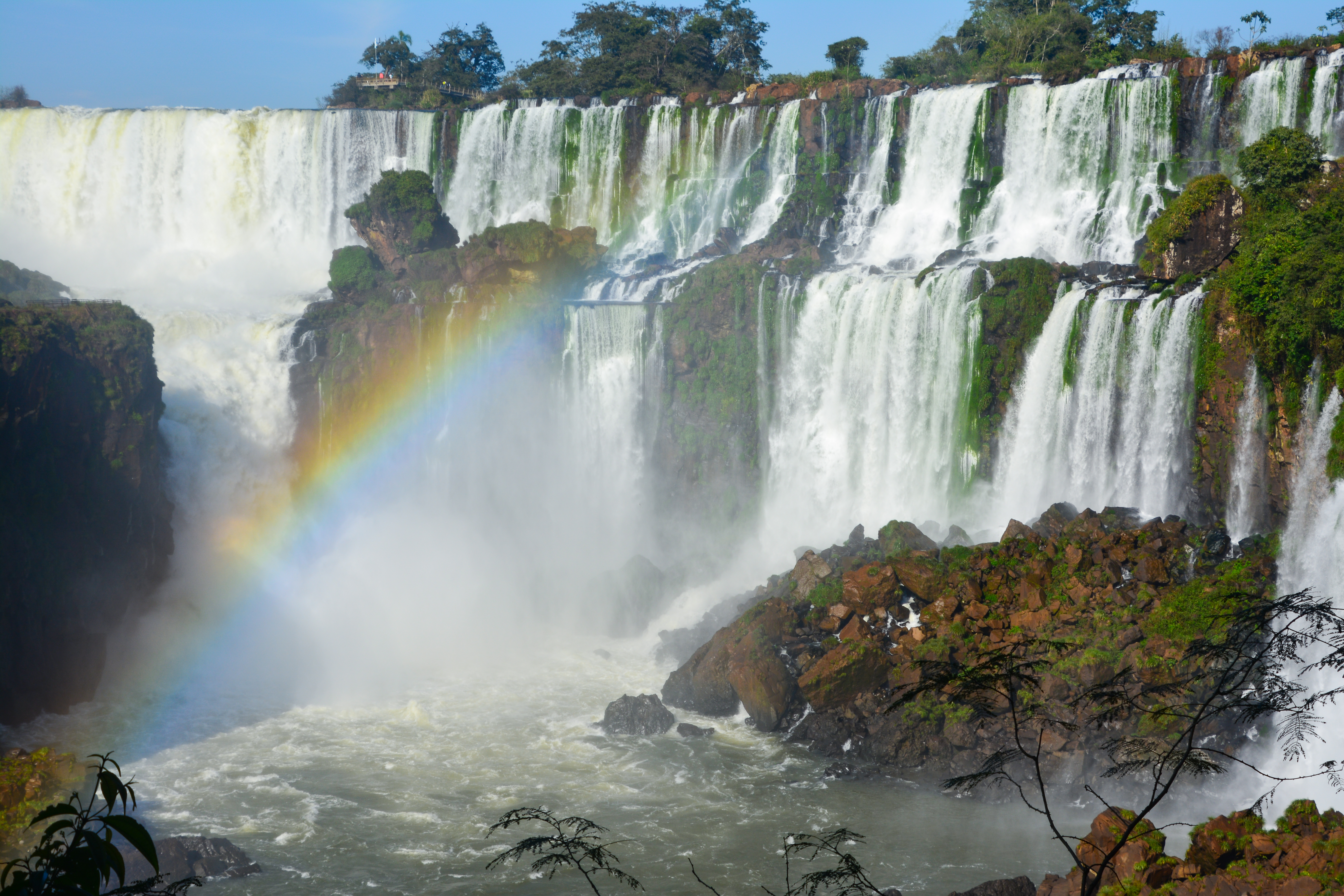
On the Lower Circuit, you can get a good view of the falls on the Argentine side. There is usually a rainbow crossing over the falls and you can frequently see boat tours down below. During my visit, it was on the Lower Circuit where I saw a whole troop of coatis walking along the narrow pathways.
The Upper Circuit
The Upper Circuit, or Circuito Superior in Spanish, takes you along trails that are above at least three large waterfalls. Here you get a better opportunity to look down at the height of the falls as well as views of the Brazilian side.
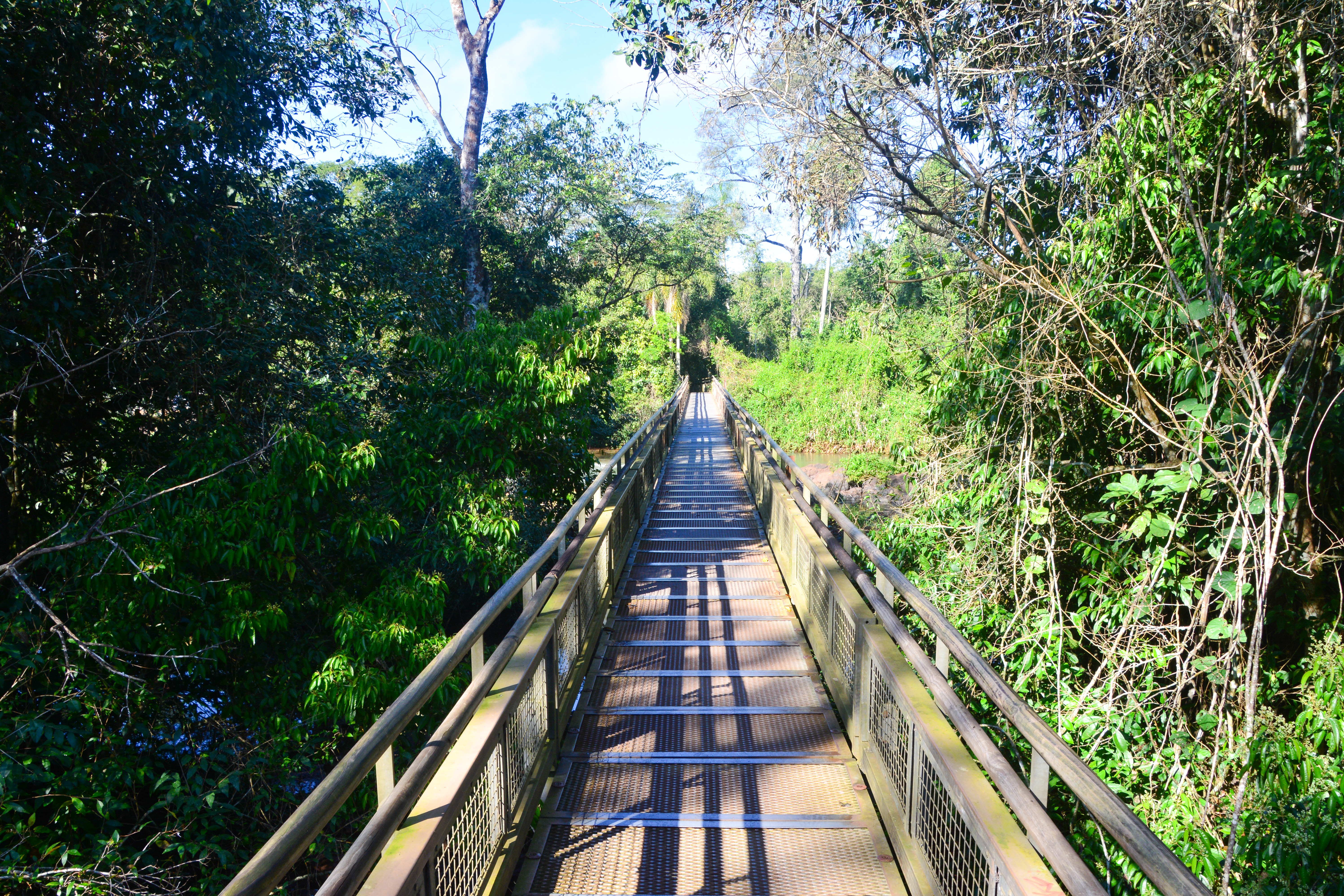
Because it is above the falls, more of the trail is in the sun. If you are worried about temperatures, it may be best to start with the Upper Circuit to avoid more of the midday heat.
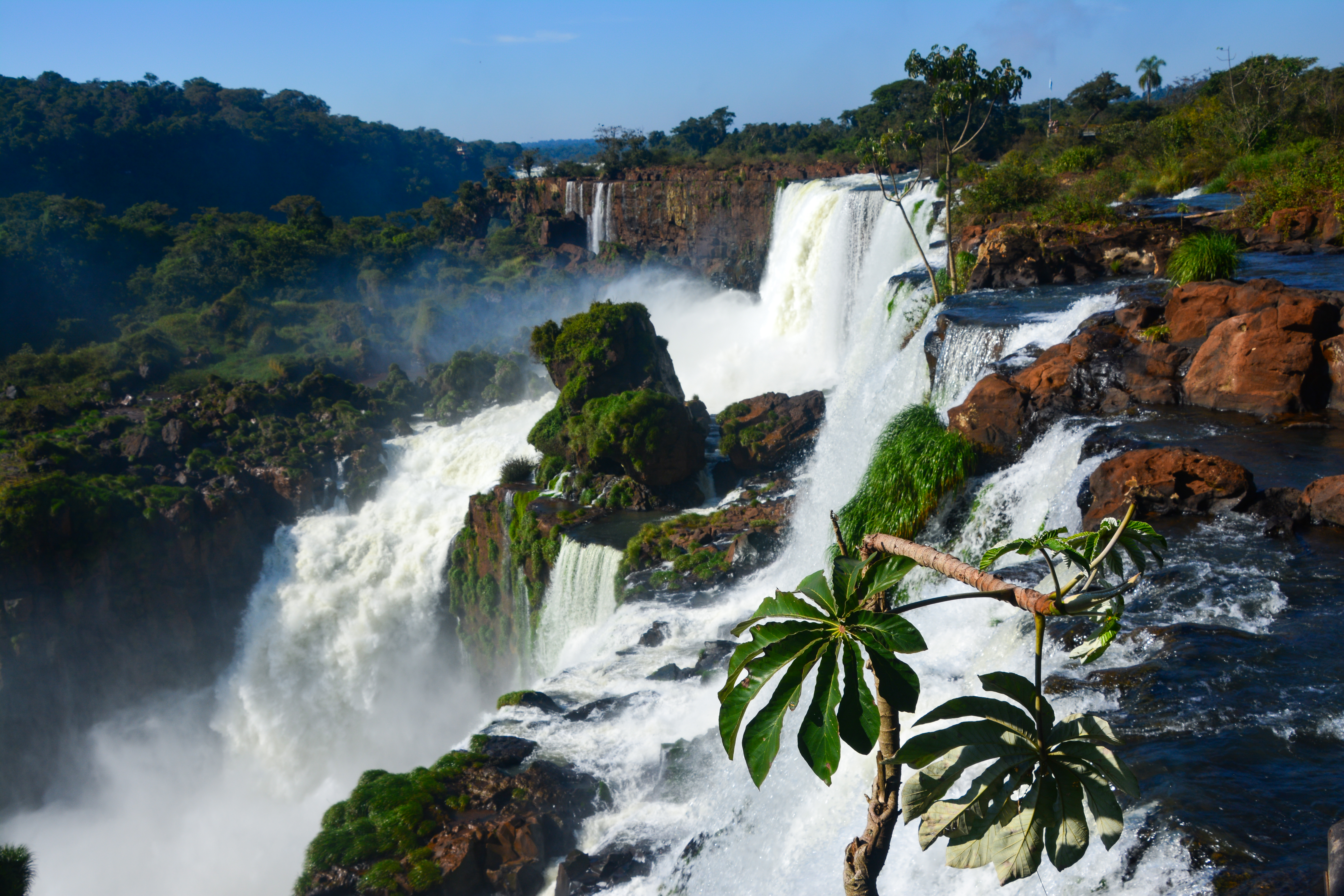
The Upper Circuit is a bit longer than the Lower Circuit. Most sources say it takes about an hour or an hour and a half to walk it, but in reality it can be done in half that time. When I visited, I took about 40 minutes to do the Upper Circuit, even accounting for photo stops.
The Devil’s Throat
The star of the show is Devil’s Throat (Garganta del Diablo). Here the rock formations come together and make what I can best describe as a massive drain. Pictures do not do it justice. You can really understand how it earned its name after you see it up close yourself.
This is the most crowded area of the park and the spot with the most mist on the Argentina side, although I do not think you need a poncho or special water-resistant clothes here.
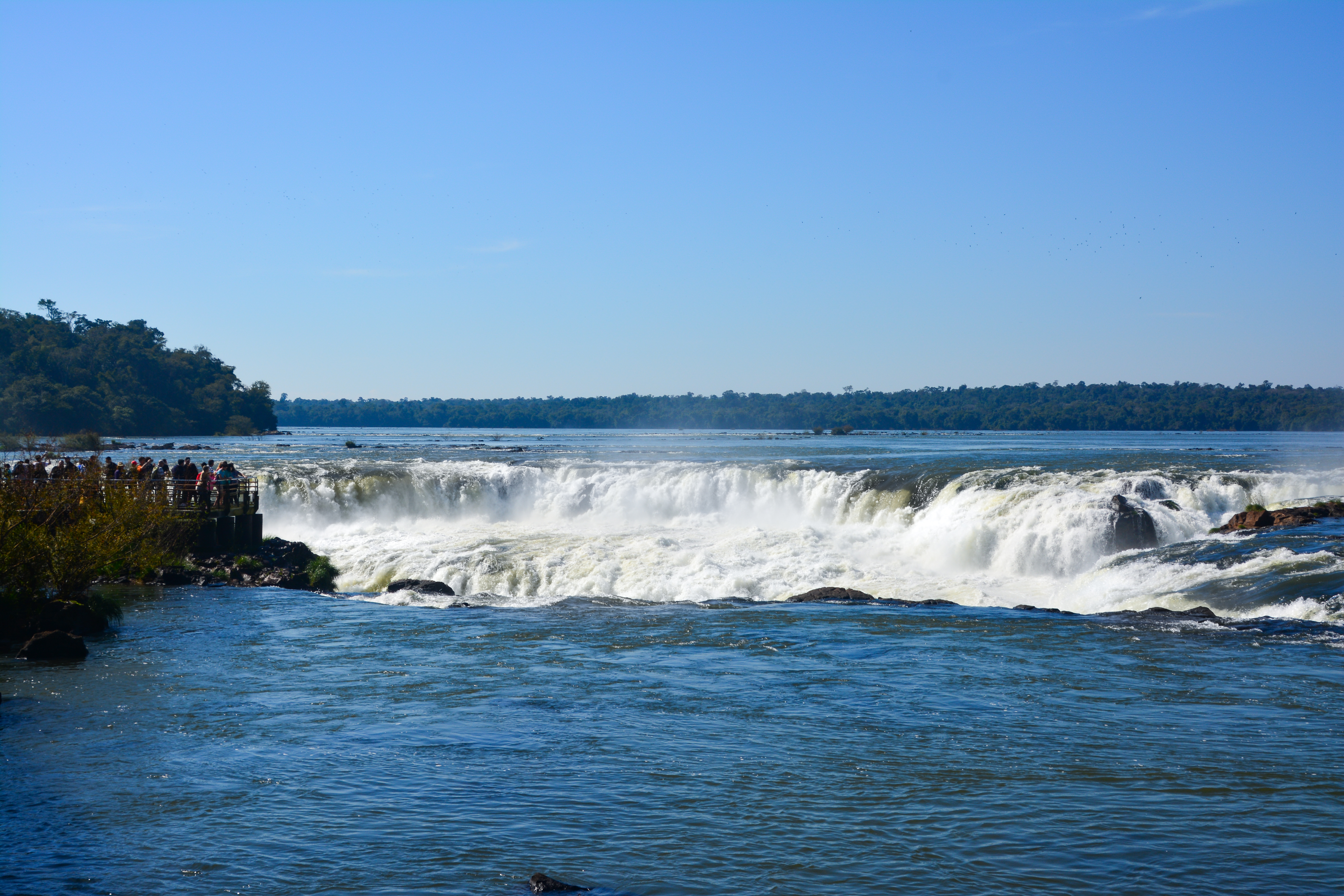
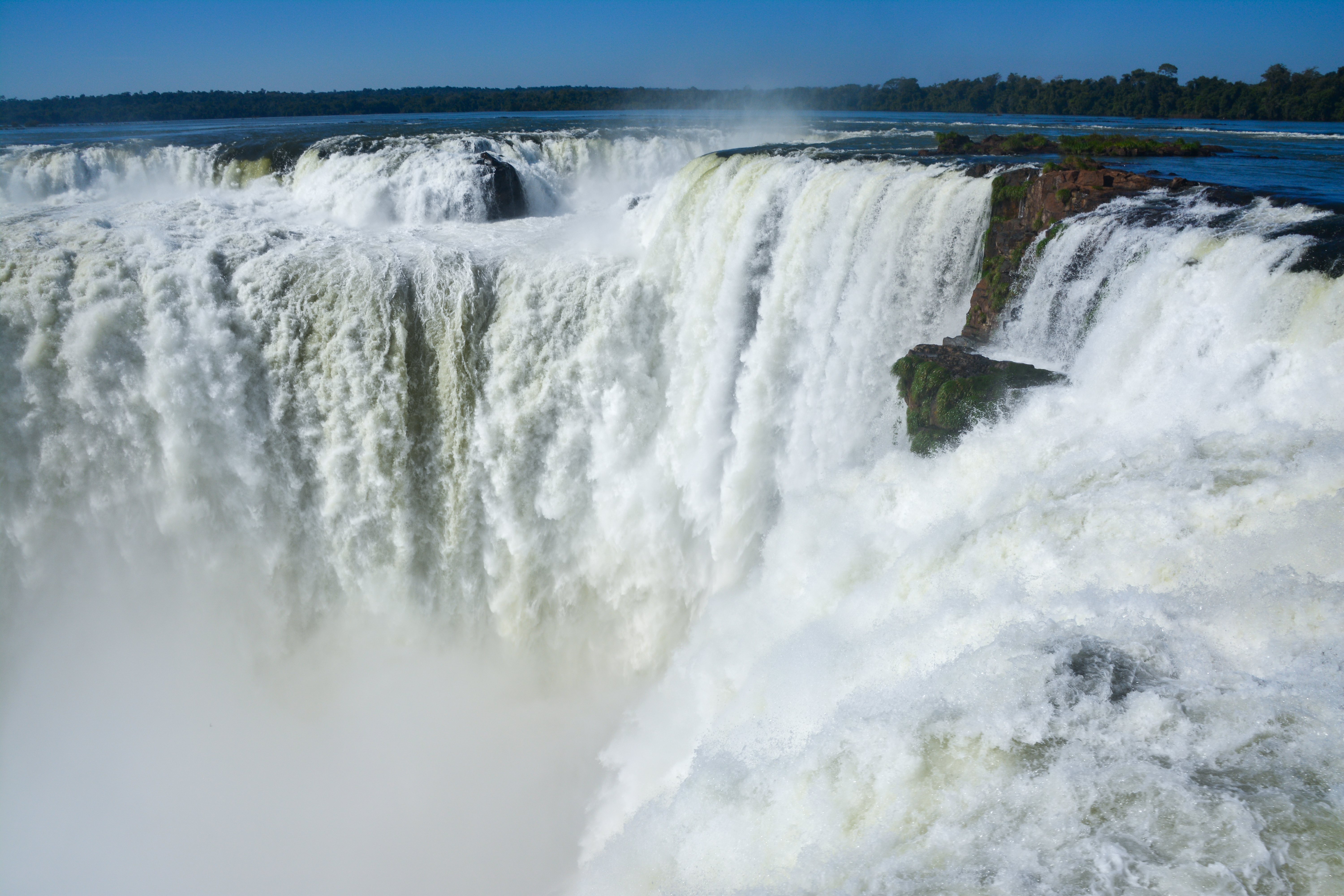
To get to Devil’s Throat you need to take the train, which you can hop onto from the main central station in the park or the second stop called Waterfall Station (Estación de Cataras). You then walk for about 15-20 minutes depending on crowds and frequency of stops to reach the end of the path where you see Devil’s Throat. It is an out and back type of catwalk trail. Watch for animals in the water, turtles on the rocks, and coatis in the trees.
Related: How to Leave No Trace
Guide to Brazil’s Side of Iguazu
Brazil’s side of Iguazu is a bit more commercially developed. For example, there are many billboards and ongoing construction along the road to Brazil’s park. Argentina’s side is preserved more like a natural park while Brazil is more urbanized. Relatedly, if you prefer to do a helicopter tour of Iguazu Falls, you’ll need to go to Brazil as Argentina no longer operates helicopter tours of the falls. This was done in order to better preserve the natural environment.

When you arrive to the park in Brazil, you can buy a ticket at a digital kiosk which will have a timed entry. Alternatively, you can buy this in advance online. Admittedly I tried to enter before my timed entry and was turned away. There are many tables and cafe services at the front of the park for when people are waiting for their timed entry.
Once you are scheduled to enter, you join a line to board a bus to get to the falls. The bus ride takes about 20 minutes. There are a mix of regular and double decker buses colorfully painted. I had not done as much research prior to visiting Brazil’s side and was surprised to learn about the need to take a bus. I had hoped for a walking trail or bike path. However, these alternatives are not available. There is no additional cost for the bus. Guests to the park are expected to use it. It is not an informative guided bus tour, but simply a form of transportation.
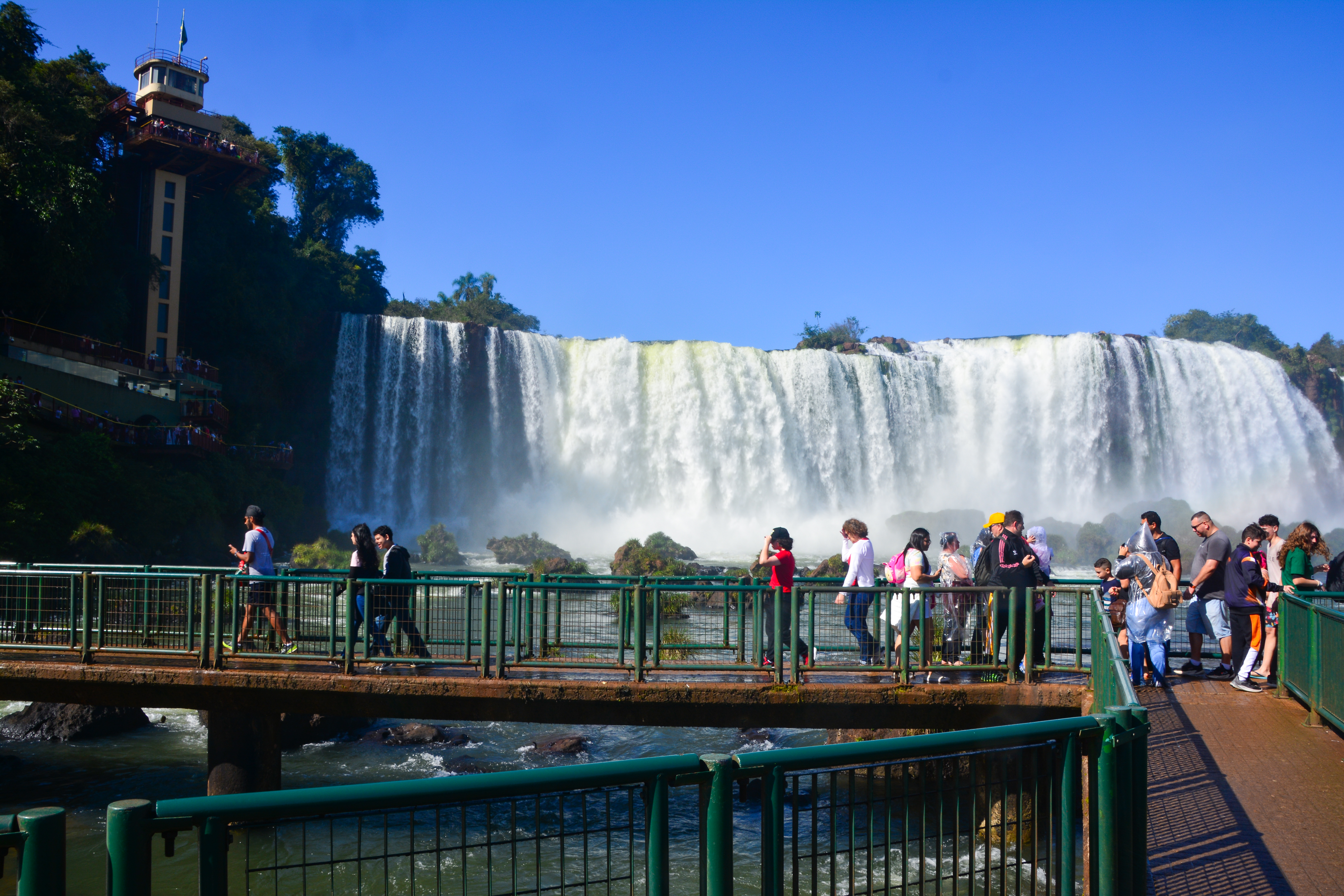
The bus makes one optional stop for those doing water sports like rafting. These are an additional cost. The second stop is where everyone gets off to get their first look at the falls. The first view is of Argentina’s side across the river. From here you are free to walk along a pathway that eventually takes you to Brazil’s most exiting part of their park: the boardwalk.
The boardwalk allows visitors to get very close to the edge and into the heart of the falls network. It also places you close enough to one of the major falls so that a great deal of mist will hit you. As rainfall is highest in December and January, the falls are at their most powerful during this time. The boardwalk would be especially incredible during this period. During my visit in July, the mist was enough to dampen a cotton T-shirt and make it impossible to see out of my water covered glasses. Many people were prepared with ponchos. I would bet that during the rainy season, a poncho would be nearly a necessity unless you don’t mind being soaked.
If you are not interested in getting misted, damp, or wet, you can skip the boardwalk and take in the views from some viewing platforms. It is also worth mentioning that there is an elevator nearby the boardwalk if you’d rather avoid the trail and stairs back to the top. It is good to have the option, especially if you have a stroller or mobility issues.
All in all, the trail and views on the Brazilian side, aside from the bus ride, take about 1-2 hours. The bus ride is about 15-20 minutes to return again to the main visitor’s center.
There are several food options, both at the main entrance and at the falls and trail area. The buffet at the end of the trail is very good. There are also cheaper snack options too. You can bring your own water and snacks to save some money.
Comparing the Two Sides: Which should you visit?
As of July 2023, the Brazilian side is a few USD more expensive than the Argentine side. The Brazilian side is also a bit simpler to visit because it is not as large. For example, the Brazilian side of Iguazu Falls can be visited in about 2 hours depending on your leisure pace and whether or not you eat in the park. A relatively efficient tour of Argentina’s side takes about 3-4 hours.
If you MUST only choose one side, I recommend Argentina’s side. There is more to explore and Devil’s Throat is truly remarkable. Although I loved the misty boardwalk on Brazil’s side, Devil’s Throat and the larger network of walking trails on Argentina’s side takes the cake for me.
Animals at Iguazu
You can find many animals in the Iguazu area. One of the most common are coatis. The coati is a relative of raccoons. You can also commonly find many birds, lizards, butterflies, turtles, and catfish. Less frequently sighted by tourists, the park is also home to toucans, caimans, snakes, tapirs, giant anteaters, monkeys, ocelots, and jaguars.
Though coati look cute, they have long sharp claws and have hurt tourists in the past. It is best to give them space and avoid feeding them. All of the animals in the park are wild animals, although some are more habituated to human presence. Feeding them scraps of food should be avoided.
Some of the animals are also very dangerous. In 1997, a jaguar killed a park ranger’s infant son. If you encounter a big cat, it is important to stay calm and back away while you remain facing the cat (do not run). If you are familiar with bear attack prevention, it follows the same recommendation. Speak calmly, firmly, and loud. An encounter with a jaguar is very rare.
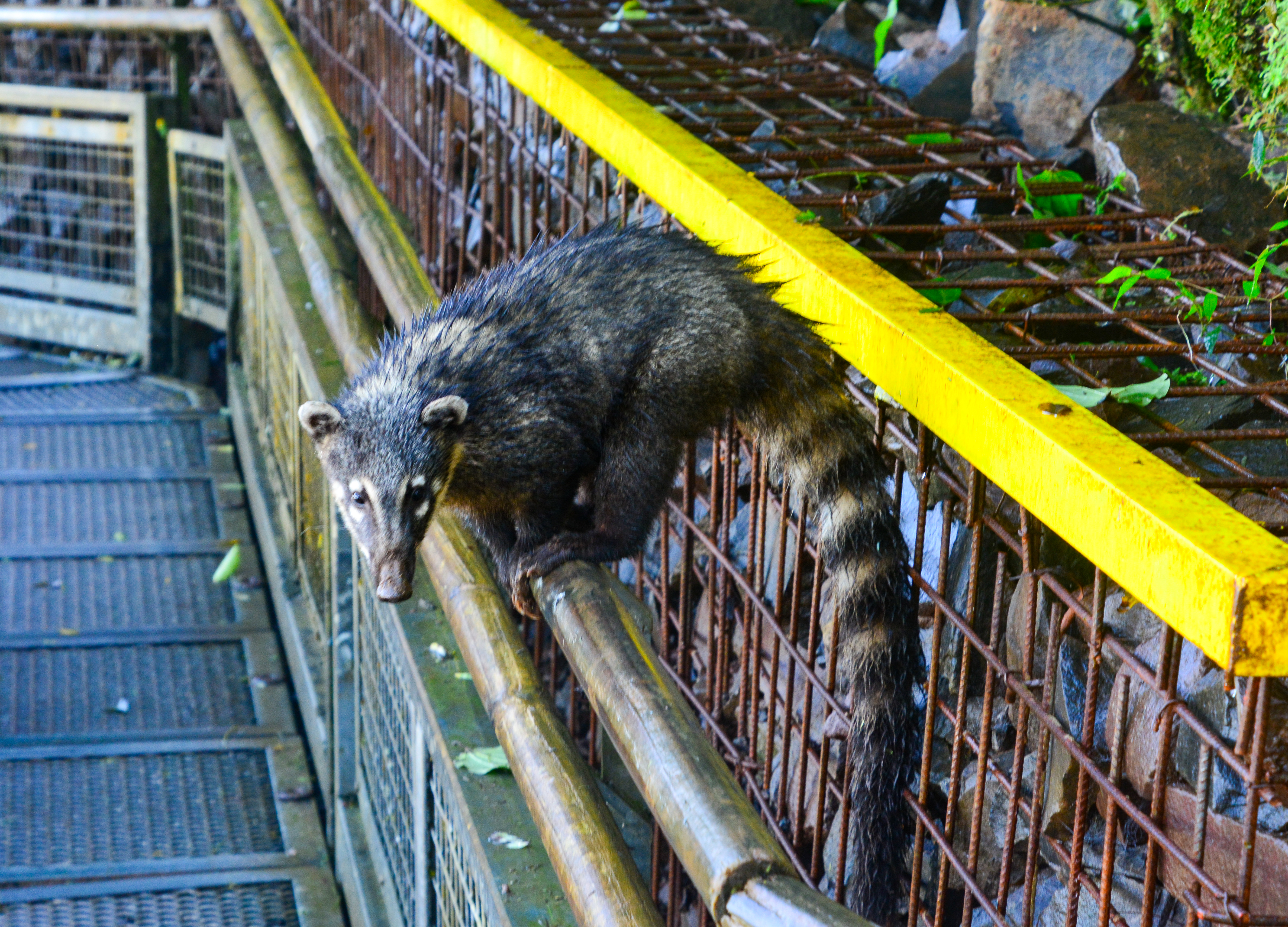
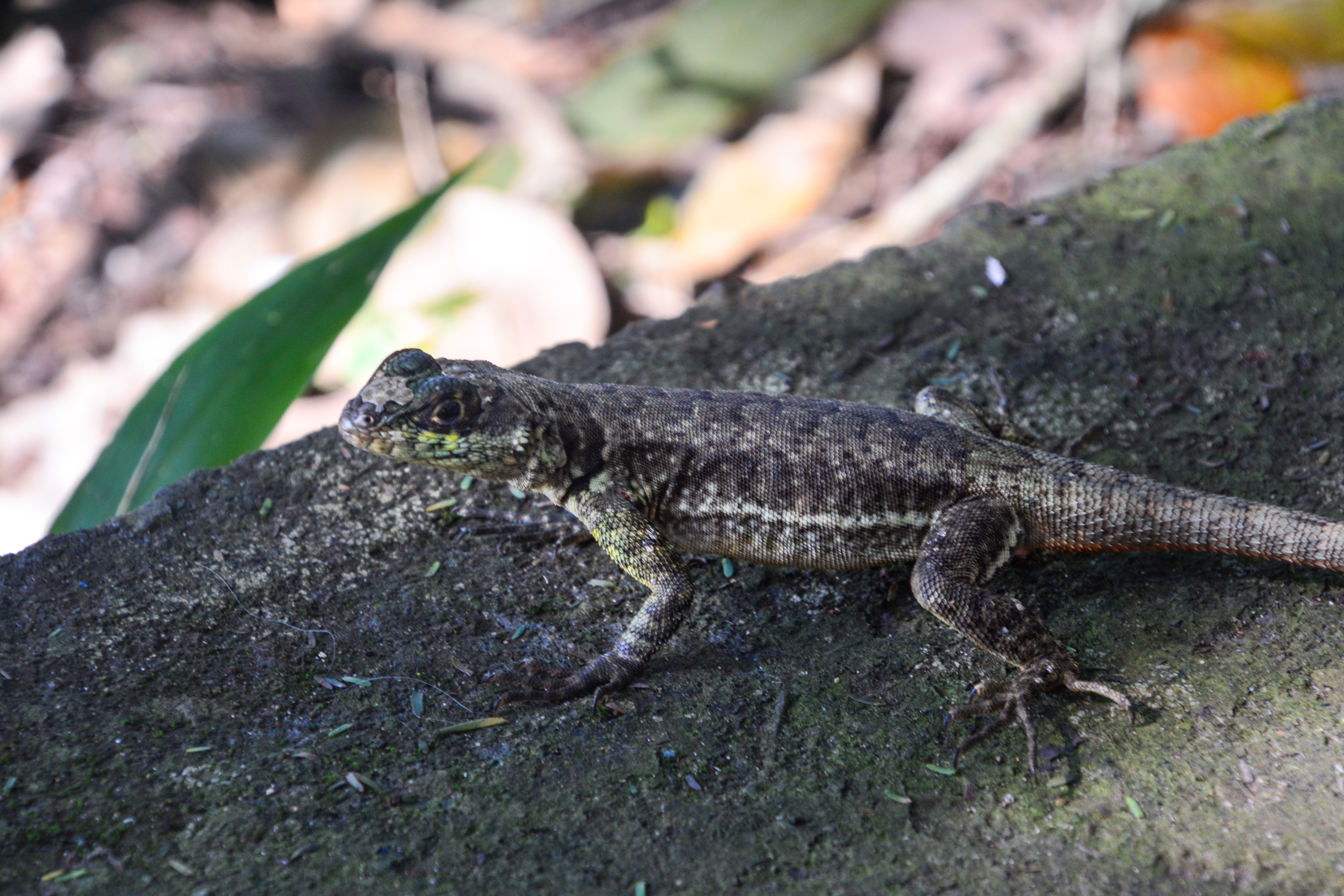
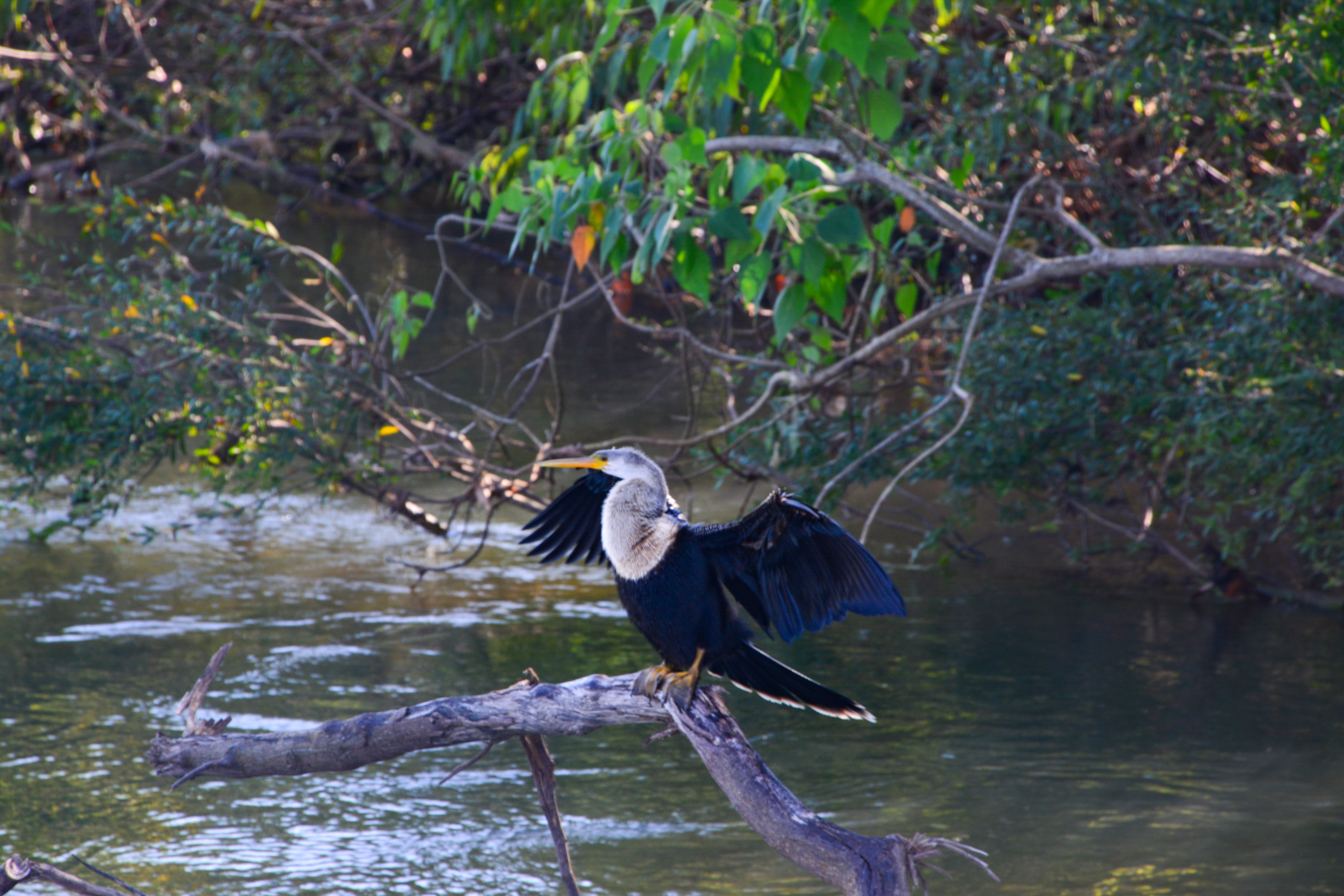
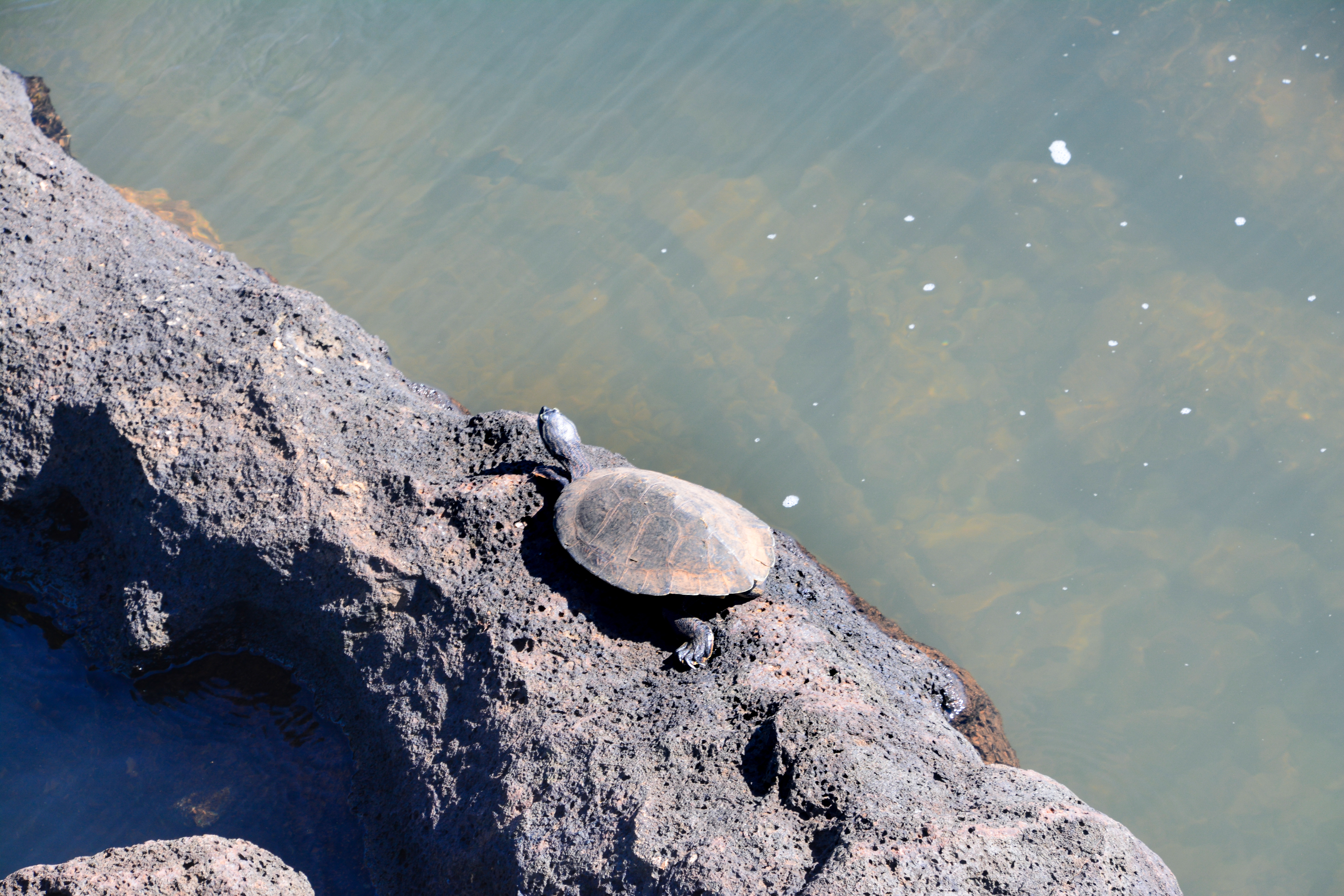
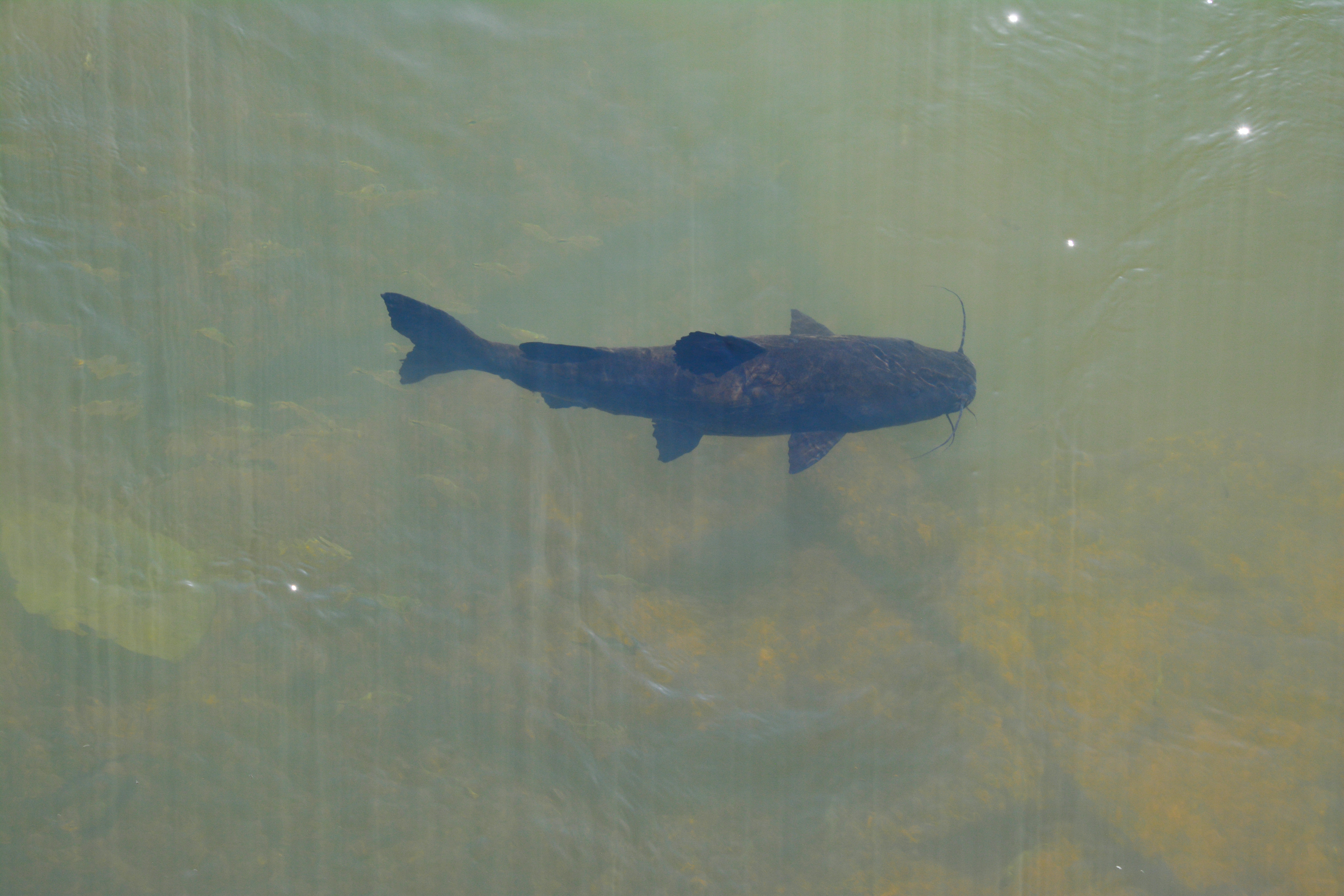
Good to Know
- The two countries use different currencies: the Brazilian Real and the Argentine Peso. It is good to have some cash of both currencies on hand for taxi drivers and/or tipping.
- The primary city you’ll be in on Argentina’s side is Puerto Iguazú. It is in the state of Misiones.
- The main city on the Brazilian side is Foz do Iguaçu. It is in the state of Paraná.
- Brazil speaks Portuguese and Argentina speaks Spanish. Being on the border however, many locals I met spoke or understood at least the basics of both languages. If you can’t speak either language, you should invest some time studying the basics (thank you, hello, check, bathroom, please, numbers, etc).
- The flight from Buenos Aires to Puerto Iguazú is about 2 hours.
- The two cities are in the same time zone.
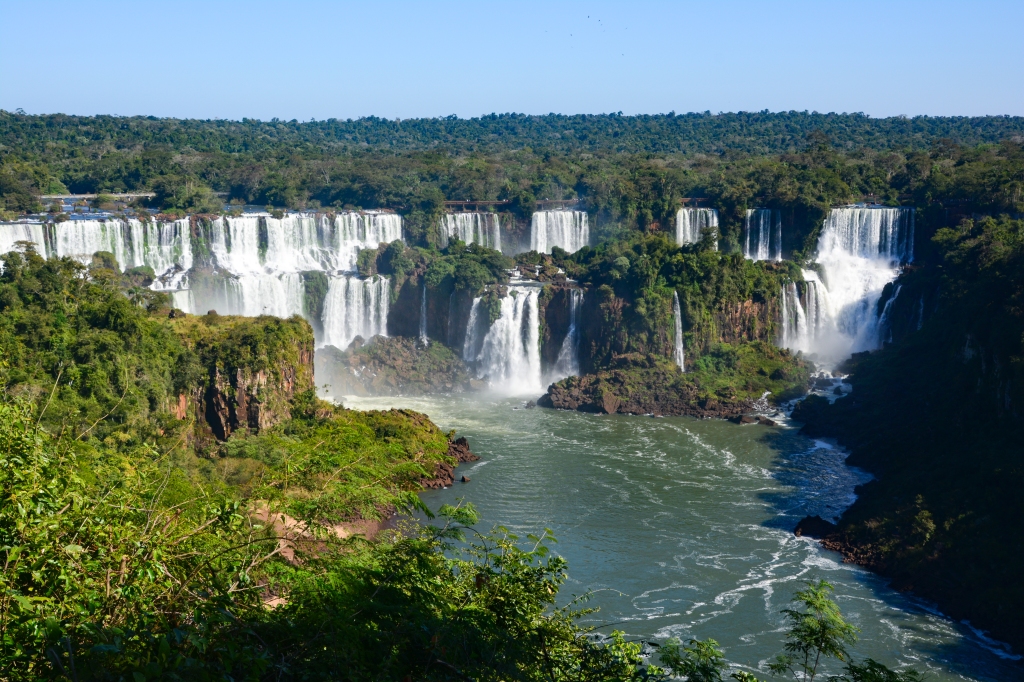



Leave a comment